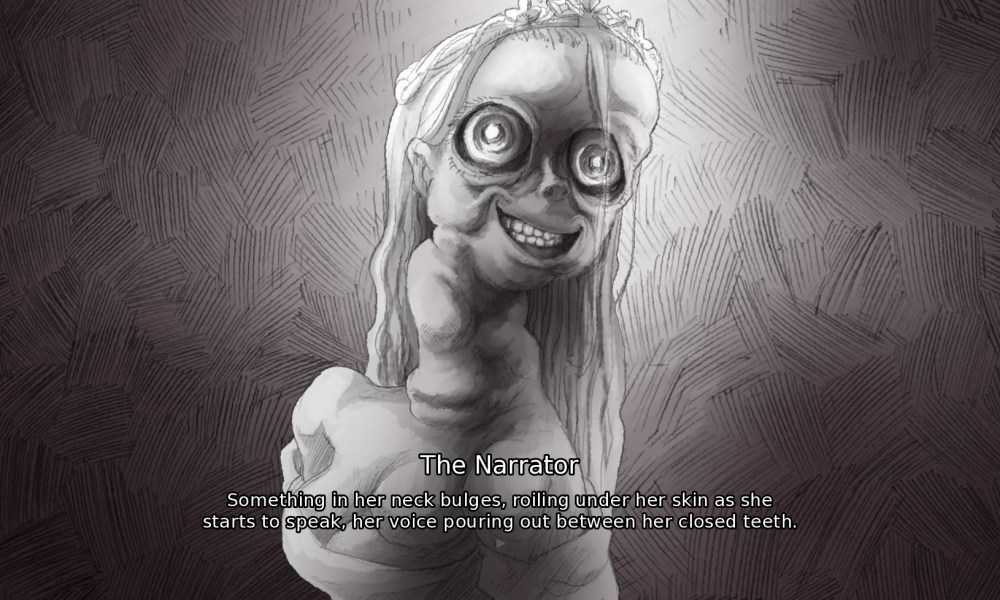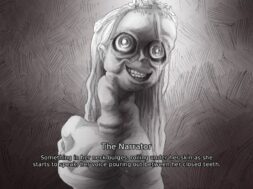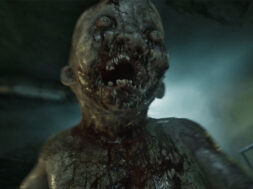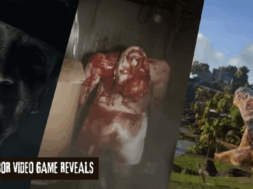
Two of the greatest and most successful horror films made in the wave that followed the successes of Dracula, Frankenstein, and Dr. Jekyll and Mr. Hyde in 1931 were virtually lost for much of the ninety years since their release. It is true that the black and white versions of Doctor X (1932) and Mystery of the Wax Museum (1933) remained in circulation in various forms for much of that time, but the original Process 2 Technicolor versions were thought to be gone forever or at least damaged beyond repair.
The films have much more than this in common. Both share much of the same talent both in front of and behind the camera as well as similarities in tone and character. They are the first horror films made in color and examples of early horror-comedies. They are also prime examples of “pre-code” horror with the most subversive moments generally used for comedic effect than the more sexually transgressive Dr. Jekyll and Mr. Hyde. Because these films remain relatively underseen compared to other great horror films of the era, the twists and turns of their plots will not be revealed here, but it is my hope that interest in seeing them will be piqued.
The films are considered the apex of Process 2 Technicolor, often referred to as “two-strip” Technicolor, though this is technically incorrect. In Process 2, a prism behind the camera lens exposes two frames of a single strip of black and white film at the same time, one through a green filter, the other through red. The frames exposed in green were then printed onto one strip of black and white film and the red onto another with the two strips of film glued together back-to-back and a dye transfer technique used for the final version. The result is a unique image that emphasizes eerie greens and rosy pink hues.
Both films were directed by perhaps the greatest journeyman director of classic cinema, Michael Curtiz, who worked in every genre imaginable and is responsible for some of the greatest films of all time including Captain Blood (1935), The Adventures of Robin Hood, Angels with Dirty Faces (both 1938), Yankee Doodle Dandy, Casablanca (both 1942), Mildred Pierce (1945), and White Christmas (1954) among many others. He made one other horror film in addition to these two, The Walking Dead (1936), an underrated gem starring Boris Karloff as a wrongly-executed prisoner who is raised from the dead by a scientist.
Curtiz was by all accounts a demanding director who worked his casts and crews long hours in the days before the Screen Actor’s Guild and other Hollywood unions. Fay Wray summed up the feelings of many by saying, “he was like part of the camera. He was very efficient and I could respect that. But I didn’t like him and I didn’t think he was a good or very nice person.” Despite this, Curtiz was also greatly respected for his work ethic and the results he brought to the screen. Though not primarily known for horror, Curtiz clearly had a knack for it and created sequences of great mood and tension balanced with humor and romance.
The sequence in Mystery of the Wax Museum in which Fay Wray is directed into danger by Lionel Atwill as Eigor is one of the most effective in either film and a showcase for Curtiz’s ability to handle suspense. The Expressionistic angles of the sets coupled with the green tinges provided by the Process 2 Technicolor visuals are unsettling. We know she is stepping ever closer to a deadly trap as she walks the stairs and corridors below the museum, encountering macabre sculptures and mysterious passages along the way. The monster reveal that follows this is one of the greatest of the era, though unsung compared to the unmasking of Lon Chaney’s Phantom or Karloff’s turn in the doorway in Frankenstein.
Also behind the camera of both films was cinematographer Ray Rennahan, legendary Art Director Anton Grot, and editor George Amy. Rennahan was a key figure in the Process 2 Technicolor process as he filmed several successful tests as it was being developed and shot several films with it. This expertise was invaluable in creating the look and mood of the film through color, light, and shadow. Grot would work with Curtiz for well over a decade, from Noah’s Ark in 1928 all the way to Mildred Pierce in 1945. His German Expressionism by way of Art Deco sets are inventive and instantly iconic as well as clear influences on designs in films ranging from The Corman Poe Cycle and The Abominable Dr. Phibes (1971) to any number of James Bond villain lairs.
Topping the casts are Lionel Atwill and Fay Wray, both at the height of their respective successes. Atwill offers a great deal of gravitas to his roles as Dr. Xavier in Doctor X and Ivan Eigor in Mystery, while Wray is luminous as Xavier’s daughter Joanne and the love interest of one of Eigor’s apprentices Charlotte Duncan. Atwill would soon become a horror veteran making memorable turns in Murders in the Zoo (1933) as the mad millionaire Eric Gorman and Son of Frankenstein (1939) as the one-armed Inspector Krogh. As the brilliant and kindly Dr. Xavier in Doctor X, Atwill is hardly the typical “mad scientist,” but is able to flex his villainous muscle in Mystery of the Wax Museum. In both cases, his portrayals are nuanced, leaving a great deal of question as to his motives throughout both films. Doctor X would be the first in a five-film run for Fay Wray that would crown her the first Scream Queen. In fact, her first scream in a horror film is heard in Doctor X. Though her role in neither film is as memorable as that of Ann Darrow in King Kong (1933), she serves as the tender, feeling heart of both.
Despite being third billed in both films, it is the fast-talking reporters that drive much of the action in them. In Doctor X, this role is Lee Taylor played by comedian Lee Tracy, who first came to prominence on Broadway in the original stage play of the newspaper comedy/drama The Front Page and became typecast as a reporter from then on. In Doctor X, he is a jokester with a Lou Costello-style “fraidy-cat” persona. As Taylor investigates the cannibalistic “Full Moon Killer,” he is gassed as he spies on Dr. Xavier’s lie detector test, falls in love with his daughter, and buzzes every character he can with a joy buzzer along the way. He provides most of the comedy of the film and perhaps overbalances it in that direction a bit. The greatest joy of Doctor X is how unbelievably bonkers it ends up being, especially for such an early horror film. It deals with cannibalism, bizarre electrical and chemical apparatus, outlandish pseudoscience, and synthetic flesh, but not a great deal of subtlety. The decision to lean into the comedy perhaps works in this case simply because of the odd intricacies and absurdities of the plot, which all add up to a very fun and entertaining, if not particularly scary film.
In Mystery of the Wax Museum, the reporter role is taken up by Glenda Farrell as Florence Dempsey. Farrell is a no-nonsense, hard-boiled career woman, constantly at odds with her editor, Jim (Frank McHugh) whom she refers to as “Poison Ivy.” Her role is not pure comedy as Tracy’s is in Doctor X. She is funny but also provides suspense and drama to the story. Based on her performance in the film, Farrell was chosen to play another reporter, Torchy Blane in Smart Blonde (1937) which would spawn a series of Torchy Blane films. Superman co-creator Jerry Siegel was so taken by Farrell’s performance that he acknowledged that it inspired the creation of Lois Lane, whose name was taken from Lola Lane, another actress to play the character. The character is also a likely inspiration (along with Torchy Blane) on Rosalind Russell’s Hildy Johnson in His Girl Friday (1940), a more comedic remake of The Front Page. Farrell may not technically be the star of Mystery of the Wax Museum, but she certainly steals the show.
As previously mentioned, both Doctor X and Mystery of the Wax Museum are prime examples of Pre-Code horror. Though the term Pre-Code is generally used to describe sound films made in Hollywood between 1930 and 1934, this is something of a misnomer. The Production Code was put into effect in 1930 as a means of regulating film content from within rather than through oversight by the U.S. government as was being considered. Between the establishment of the Code and the beginning of its enforcement under Joseph Breen in June of 1934, filmmakers would often purposefully include elements that defied the code. Local jurisdictions would them often censor films for their regional markets, leading to various cuts of films being shown in different parts of the country, not to mention the international markets, which were generally more strict. Warner Brothers was not quite so bold in breaking the Code as Paramount, whose Dr. Jekyll and Mr. Hyde and Island of Lost Souls have already been discussed in previous installments of this column. At most studios, changes were made during the scripting process. Still, both films are filled with pre-code touches involving heroin, liquor, pornography, and premarital sex, not to mention cannibalism and on-screen depictions of criminal activities, all forbidden by the as yet unenforced Production Code.
However, many films made during the pre-code era ran into censorship when it came to reissuing films after 1934. This is one reason why both Doctor X and Mystery of the Wax Museum were very nearly lost forever. Mystery received a re-release approval certificate in 1936 but Doctor X did not for being “too gruesome,” particularly for its mentions of cannibalism and its long synthetic flesh transformation sequence. Jack Warner attempted to reissue the films again in the early forties as Universal once again was finding great success with horror, but was pressured to withdraw them both. As a result, the films were out of circulation for quite some time. In 1956, they were officially “lost” when an inventory resulted in no copies of either film being found. In 1970, Jack Warner discovered nitrate prints of both films in his private vault, though both were badly damaged. The prints would go missing again for some time before being rediscovered in 1983 and the first attempts at restoration were made, which produced unsatisfactory results.
Fortunately, modern restoration techniques have restored these films to their former glory, made them available on Blu-ray through Warner Archive, and ripe for rediscovery.
In Bride of Frankenstein, Dr. Pretorius, played by the inimitable Ernest Thesiger, raises his glass and proposes a toast to Colin Clive’s Henry Frankenstein—“to a new world of Gods and Monsters.” I invite you to join me in exploring this world, focusing on horror films from the dawn of the Universal Monster movies in 1931 to the collapse of the studio system and the rise of the new Hollywood rebels in the late 1960’s. With this period as our focus, and occasional ventures beyond, we will explore this magnificent world of classic horror. So, I raise my glass to you and invite you to join me in the toast.













